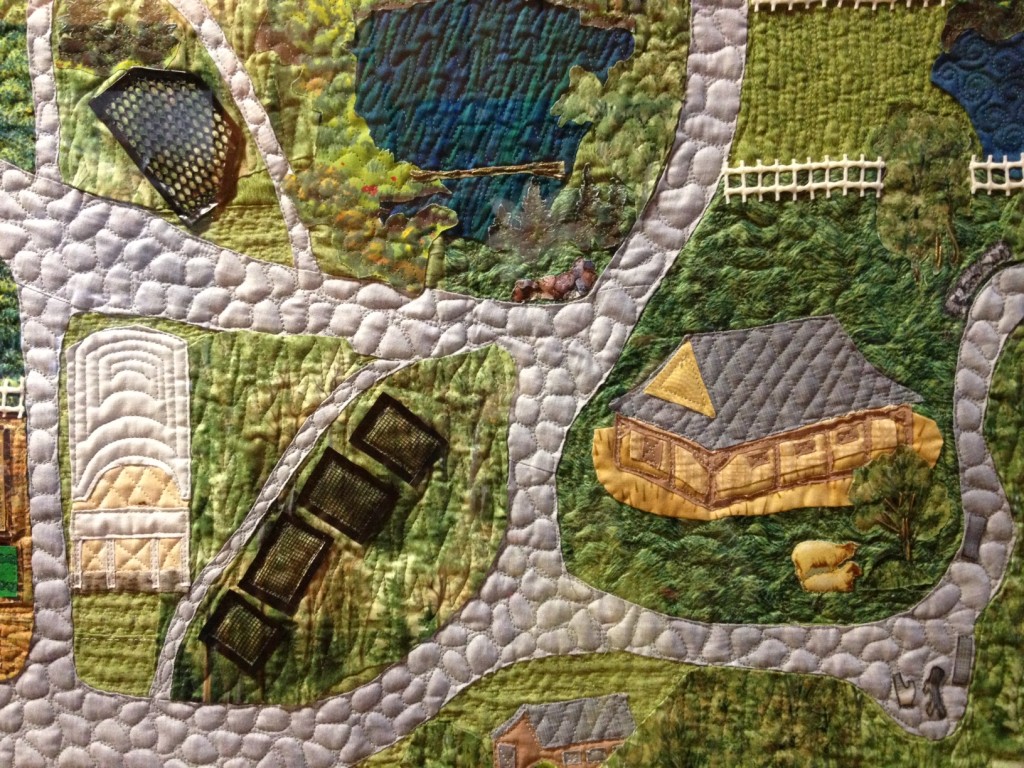Quilting—the sandwiching of a warmth-provider like cotton or wool between two pieces of cloth— is almost as old as farming and it can be traced back to ancient Egypt and China. Today, about 14% of all households in the United States has a quilter; that translates into 21 million quilters. Quilting is not just a hobby, it is big business.

The Nature Center and Ice Pond House
I came to quilting about 20 years ago. Engaged daily in cerebral activities at that time, I found quilting, watching something come alive with color and pattern into a finished product, was much more satisfying than the vocation I had chosen. I was hooked. So, when the Drumlin Farm folks suggested a map might be a helpful tool for visitors to find their way around the farm, I gladly picked up the mantle.
Once a rough design was agreed upon, I embarked on gathering fabric for the project. For me, selecting the right fabrics to interpret a work is like a treasure hunt. The colors, the scale, the personality of the fabric all matter. Patterns and designs speak to a project. Thousands of bolts of fabric, dozens of purchased yards, and hours of internet searching later, I finally had a stash of fabric from which to fashion a quilt map of the farm. This search took about six months.

The Red Barn
Fabrics for each building were chosen to not only preserve the integrity of the building but to create a visual impression that would resonate with those looking for guidance around the farm. The animals, the aviaries of Bird Hill and the Underground posed the most challenges. The aviaries are made of regular household screening wrapped in electrical tape (a thank you to Moison Ace Hardware in Bedford for giving me the screening when I told him what I wanted it for) and the Underground is really a piece of air conditioning filter a friend offered for use. The animals posed a harder challenge since Heritage breeds are not on the minds of fabric designers but finally compatible animals were found. Each building was drafted on paper for size, scale, and perspective before it was produced in fabric form.

Drumlin Underground, the vernal pool, the Crossroads Barn, Bird Hill, and the Farm Life Center
Which detail to depict and which detail to delete was a decision that hovered over every aspect of this quilt. The mere size of the piece eliminated some detail, but other detail, like the old fallen tree in the picnic area and the rock protruding from the earth along the walkway from the parking lot to the Admissions window, were too important to our young visitors—and my grandchildren– not to be included.
Finally, when the top had been pieced and appliquéd, I turned it over to Concessa Shearer of Wayland so she could work her magic. A very talented artist/quilter, she machine quilted the top, the batting, and the backing into a completed quilt map.
The quilted map of Drumlin Farm now hangs in the hall of the Nature Center—be sure to check it out on your next visit!
—Linda Conrad is a long-time volunteer at Drumlin Farm

